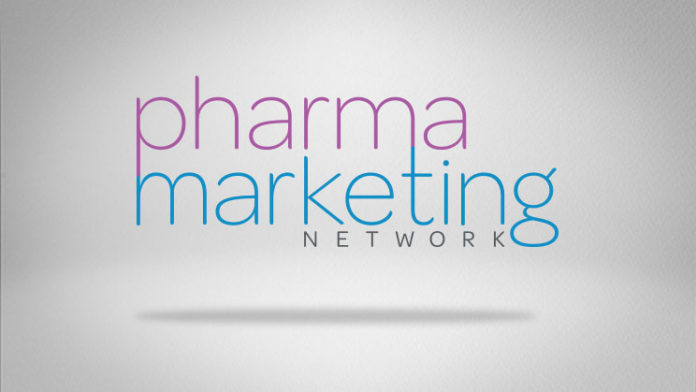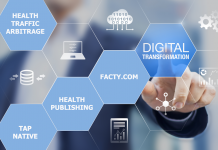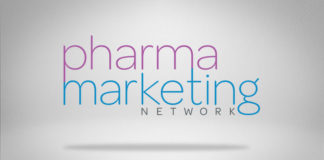Vol. 3, No. 9: October 2004 – PREVIEW
The following are summaries of articles planned for the upcoming October 2004 issue of Pharma Marketing News. You must be a registered subscriber to receive this newsletter FREE by e-mail as soon as it is published. Subscribe Now!
Article Summaries
Up Front – Vioxx Withdrawal and the “Me-Too Drug Domino Effect”
Opinion by John Mack
 Merck’s “voluntary” withdrawal of Vioxx from the market will likely have strong repercussions throughout the pharmaceutical industry, not the least of which I call the “Me-Too Drug Domino Effect,” a term I just coined.
Merck’s “voluntary” withdrawal of Vioxx from the market will likely have strong repercussions throughout the pharmaceutical industry, not the least of which I call the “Me-Too Drug Domino Effect,” a term I just coined.
A “me-too” drug is a chemical entity that is structurally very similar to an already known drug and having only minor pharmacological differences. According to Marcia Angell, former editor of the New England Journal of Medicine and author of the book “The Truth About the Drug Companies,” “about 25 to 30 percent of [pharmaceutical company] sales goes to marketing [me-too drugs], much of which targets doctors and often masquerades as education.”
An axiom of the Me-Too Drug Domino Effect is that if there is a problem with a drug that has “me-too” competitors, the competitors are also at risk. You might quibble with Angell’s numbers, but as a pharmaceutical marketer you know that a substantial portion of your income is attributable to marketing so-called “me-too” drugs. This is why the Vioxx withdrawal and other instances of the Me-Too Drug Domino Effect should be of concern to you.
Read more about the “Me-Too Drug Domino Effect” in the October issue, scheduled for publication on or about October 20, 2004.
Physician Adoption and Use of Technology at the Point of Care
By Caren Spinner and John Mack
“We are moving aggressively to bring our health care system into the modern world of information technology,” said Mark B. McClellan, M.D., Ph.D., CMS administrator. “We are committed to using health information technology to improve health and health care not only for Medicare’s 41 million beneficiaries, but for all Americans.”
This article provides insight from experts such as Mark Bard, President of Manhattan Research and David Kibbe, M.D., Director, Healthcare Information Technology, American Academy of Family Physicians (AAFP), on the impact of new technologies at the point of care on pharmaceutical sales and marketing.
The following topics are covered:
- e-Detailing
- The Physician Perspective
- Spending on Healthcare Technology
- Adoption of Technology by Physicians
- The Electronic Medical Record
- Why Pharma Should be Involved
Read more about this topic in the October issue, scheduled for publication on or about October 20, 2004.
The Role of Tablet PCs in Pharma Sales and Marketing
By Caren Spinner
The latest device in the progression of mobile computing technology is the tablet or slate PC. The Tablet PC is the evolution of the Notebook PC and the most mobile PC ever. However, mobility does not necessarily equate to “high impact” or guarantee an increase in face time with the physician. Understanding how to most effectively utilize this technology is critical.
This article summarizes different aspects of this latest innovation in portability and performance and how they could be used to increase sales force effectiveness in both the primary care and hospital-based environments.
The following topics are covered:
- What Is a Tablet PC?
- Mobility and Functionality
- Training is Critical for Full Benefit
- Pilot for Operational Success
- Tablet PCs and Closed-Loop Promotion
- Tablet PCs in the Hospital Setting
- Use By MSLs
Read more about this topic in the October issue, scheduled for publication on or about October 20, 2004.
Strategies for Enhanced Physician Targeting and Segmentation
By Caren Spinner
The following topics are covered:
- Some Marketers Miss the Boat
- The Four T’s of Micromarketing
- The Practice Context
- The Treatment Context
Read more about this topic in the October issue, scheduled for publication on or about October 20, 2004.
No More Free Lunch in California?
By John Mack
The pharmaceutical industry has often been accused of lavishing gifts and free meals on doctors with the intention of influencing their prescribing decisions. That is the premise, for example, of a report published recently by the California Public Interest Research Group (CALPIRG) entitled “‘Tis Always the Season for Giving.”
CALPIRG claims that to increase their chances of face time with a doctor, drug reps come armed with more than a few pens and notepads. They bring chocolates and watches and offer expensive meals and trips. The cost of these freebies, claims CALPIRG, is passed on to the consumer in higher prices paid for drugs. “The bottom line,” said Emily Clayton, CALPIRG’s Healthcare Associate and author of the report, “is our drugs don’t have to cost as much as they do. If drug companies stopped trying to influence prescription-writing by giving gifts to our doctors, then consumers, insurers and the government could all save money on prescription drugs.”
SB 1765, sponsored by CALPIRG, would require pharmaceutical companies — and also any person who engages in pharmaceutical promotional activities on behalf of a pharmaceutical company — doing business in California to “adopt and update a Comprehensive Compliance Program (CCP) for interactions with health care professionals.” SB 1765 is currently awaiting signature by Governor Schwarzenegger.
The following topics are covered:
- Voluntary Guidelines
- Provisions of the Bill
- Exemptions
- Schwarzenegger in a Tight Spot?
Read more about this topic in the October issue, scheduled for publication on or about October 20, 2004.
Drug Reimportation Survey Results
By John Mack
This article summarizes the results of a recent Pharma Marketing News Survey on this topic. The survey asked the following questions:
- In your opinion, if Congress were to pass one of the 2 major reimportation bills, which bill would you prefer to be passed?
- Regardless of the fate of bills in Congress, what’s your level of agreement with the following arguments that have been used against reimportation of prescription drugs?
- Proposed reimportation programs are too complex and expensive
- FDA cannot guarantee safety of reimported drugs
- Risk of endangering patients with counterfeit or substandard drugs
- Would hinder the ability of pharmaceutical companies to invest in R&D for new drugs
- No guarantee reimported drugs would be cheaper after middlemen get their cut
What do you think? You still have time to give us your opinions. Click here to take this survey. You will be able to see a summary of the de-identified results immediately after completing the survey.
Read more about this topic in the October issue, scheduled for publication on or about October 20, 2004.





![6 Digital Tools at the Center of Healthcare Digitalization [INFOGRAPHIC]](http://ec2-54-175-84-28.compute-1.amazonaws.com/pharma-mkting.com/wp-content/uploads/2021/04/6DigitalTools_600px-218x150.jpg)




![6 Digital Tools at the Center of Healthcare Digitalization [INFOGRAPHIC]](http://ec2-54-175-84-28.compute-1.amazonaws.com/pharma-mkting.com/wp-content/uploads/2021/04/6DigitalTools_600px-100x70.jpg)




